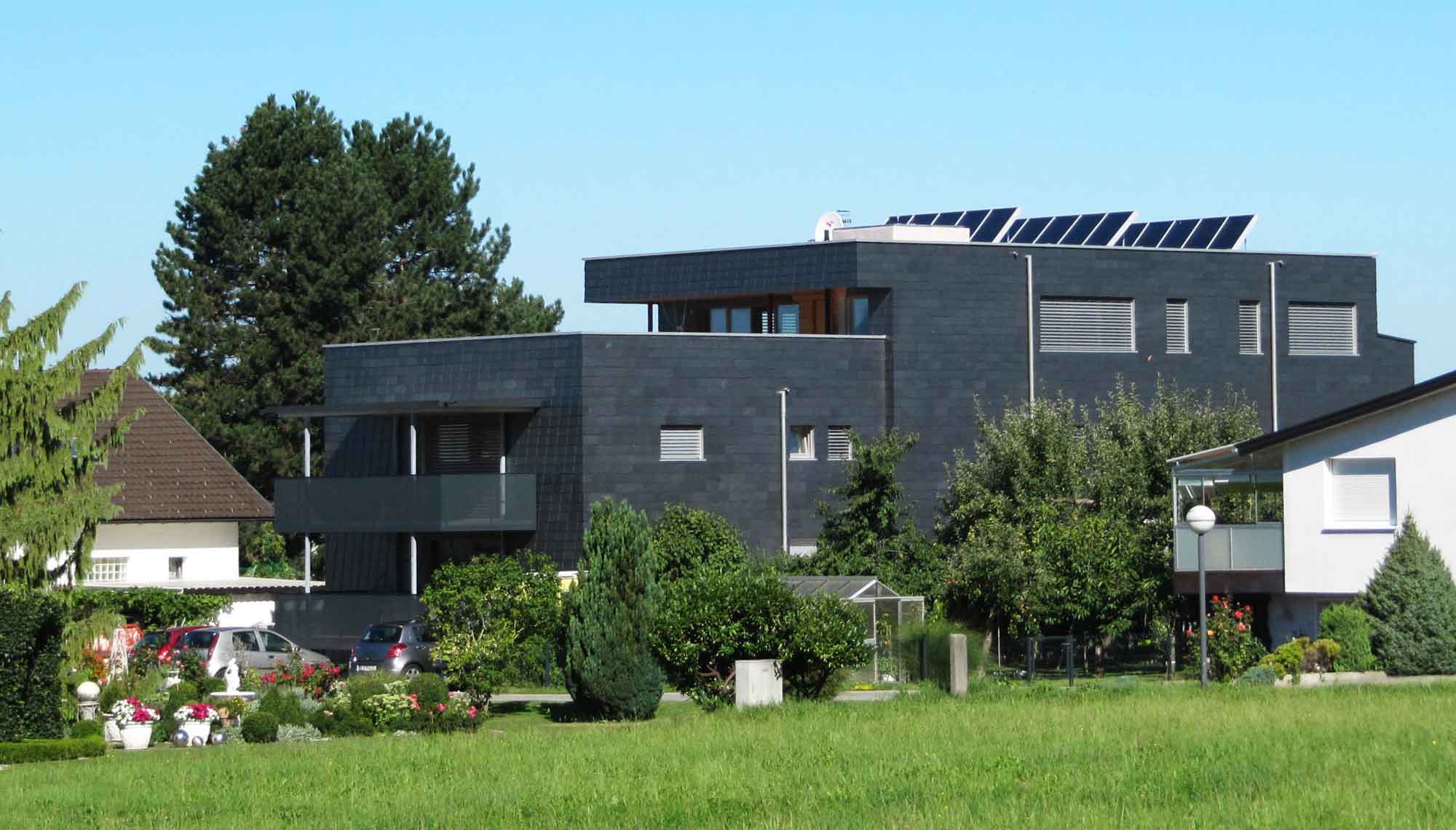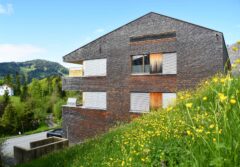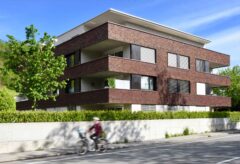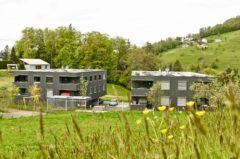The “LZE 100 Leuchtturmobjekte”1 project recorded and statistically evaluated energy consumption figures from over 100 representative high-efficiency buildings used for a variety of purposes over an operating time of between three and twenty-five years and compared them with the equivalent values for identical building types with a conventional level of energy consumption. The project thus makes an important contribution to an impartial debate over whether energy demand figures for high-efficiency buildings that have been calculated in advance can actually be achieved in their day-to-day operation. Drawing on the data collected from real life, the extensive monitoring study demonstrates the savings potential offered by buildings that have been optimised for energy efficiency compared with other new buildings, renovation projects and existing buildings used for the same purpose. The data also were used to calculate the actual greenhouse gas emissions generated from running the buildings.
Selected results
>> Energy used for heating/hot water in multi-family homes
For the “multi-family home” building category, the analyses revealed that large multi-family homes of all ages have an average specific final energy consumption of between around 105 kWh per m2 of living area (Wohnnutzfläche) per year (m2WNFa) for buildings heated by district heating and around 140 kWh/(m2WNFa) for those heated by oil- or gas-fired boilers. The specific final energy consumption for room heating and hot water in newbuilds is roughly 85 kWh/(m2WNFa) on average.
The multi-family homes with gas-fired heating and the best energy optimisation measures achieve specific final energy consumption values for heating and hot water of between 42 and 44 kWh/(m2WNFa), while the equivalent figure for multi-family homes with district heating ranges from 50 to 53 kWh/(m2WNFa). New high-efficiency multi-family homes thus consume around 40–50% less energy than new buildings constructed in line with the current minimum requirements. Leading the field are multi-family homes heated by heat pumps, which boast specific final energy consumption values of 12–13 kWh/(m2WNFa) for heating and hot water.
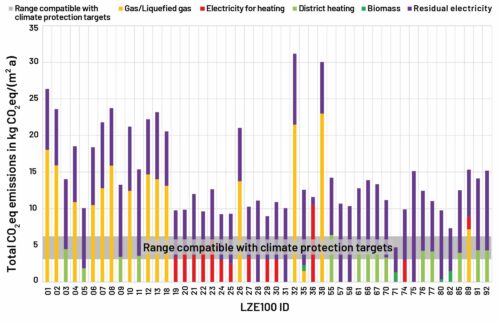
he chart shows the emissions in CO2eq for all types of apartment block by living area, broken down by energy carrier; the analysis uses the annual conversion factors specified in Austrian Institute of Construction Engineering (OIB) Guideline 6 (2019). “Residual electricity” comprises all final energy consumption (for heating and hot water, auxiliary electricity, general electricity and household electricity) minus the electricity used for PV systems. The emissions in CO2eq generated by buildings heated by natural gas are several times higher than the levels that would be compa-tible with climate protection targets (grey area).
Image: Energy Institute Vorarlberg
>> Estimating greenhouse gas emissions
Regardless of what energy carrier is used for heating and hot water, significant reductions in the consumption of auxiliary and household electricity can also be achieved in buildings that have been optimised for energy efficiency. The calculations show that many of the buildings studied, generate very low greenhouse gas emissions day to day. The best multi-family homes with heat pumps generate total emissions from all their energy applications of around 11 kg/(m2WNFa) based on an assessment using the current consumer electricity mix for Austria. Assuming the anticipated specific greenhouse gas emissions from consumer electricity for 2030, these buildings will be able to meet the relevant climate targets2 (i.e. emissions of no more than 6 kg/(m2WNFa)). The same applies to the best buildings with heat pumps and for the best renovation projects.
> High-efficiency buildings do work in practice.
> A high level of efficiency can be planned and makes economic sense.
> The current minimum level of requirements for new buildings is too low to meet climate targets.
> The best energy carriers for new buildings are heat pumps and local/district heating.
> Large-scale PV systems are close to becoming cost-effective.
> The analysis of the real energy consumption of buildings is just beginning.
Outlook
The low consumption figures for the best buildings studied highlight how much potential there is for reducing consumption in new buildings and renovation projects. As well as the decarbonisation of the construction sector, key factors for achieving the target of making Austria climate neutral by 2040 also include lowering energy consumption in new buildings and improving the thermal upgrade rate and quality in the existing stock. Amongst other things, experts recommend a further tightening of the requirements for the building envelope in new buildings and renovation projects, an immediate ban on fossil fuels in newbuilds, a binding timetable for removing fossil fuels from existing buildings and a clear focus on the renovation of buildings. „In practice, high-efficiency new buildings and renovation projects on different types can result in much lower energy consumption using readily available components and concepts than the statutory minimum requirements dictate. Buildings with an envelope whose quality meets the minimum technical construction requirements will miss the climate targets, even if they’re fitted with a renewable heat source. Building efficiency and renewable heat sources need to be combined if the building sector is to be compatible with our climate protection goals.”
www.nachhaltigwirtschaften.at/de/sdz/projekte/lze-100-leuchtturmobjekte.php

Thomas Roßkopf-Nachbaur
Energy-Efficient Construction, Energy Institute Vorarlberg
1 Project partners: LANG consulting – Ing. Günter Lang (project Management), Energy Institute Vorarlberg
2 www.energieinstitut.at/unternehmen/bauen-und-sanieren-fuer-profis/low-cost-nzeb-paris-kompatible-gebaeude/was-ist-ein-paris-kompatibles-gebaeude
